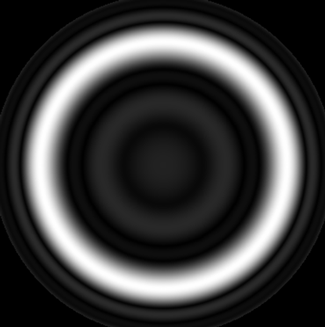Tayloring light intensity profiles

There is a popular experiment wich aims to show the amount of heat that can be generated with solar light. It consists on concentrating the light from our star on a sheet of paper, preferably a black sheet, by means of a lens. Light rays that go through the surface of the lens concentrate on a tiny brilliant circle that literally burns the sheet surface. If we want to be succesfull with the experiment it is necessary to adjust with accuracy the distance between the lens and the paper. If the lens is too far or too close to the sheet of paper, then the light circle is not intense enough to burn it.
The experiment also serves to illustrate what does a converging lens do with light rays that arrive to its surface parallel between them. Light concentrates on a single point at a definite distance, wich we call the focal distance of the lens. At this distance light intensity has its highest value, while it decreases at any other distance from the lens. If we measure light intensity at diferent distances from the lens, always on the optical axis (i.e. the line perpendicular to the surface of the lens that goes through its center), and we draw the obtained values as a mathematical function, the resulting shape would be similar to the intensity profile shown in the figure:
Sometimes it can be interesting to obtain intensity profiles along the optical axis with shapes different from those of the figure. In our work, we have proposed a method to obtain intensity profiles of arbitrary shapes along the optical axis of a converging optical system by introducing a device that can modulate the intensity and the phase of the incident light. This device, a Spatial Light Modulator, consists on a matrix of pixels that can represent any figure sent by a computer. In fact, it is one of the Liquid Cristal Displays (LCDs) of a videoprojector used to project video images on a screen. In the configuration used in our laboratory, the figure displayed on the matrix is a bidimensional function in wich gray levels become different light phase modulation levels.
A key point in our research has been to set the figure, the mathematical function, that has to be sent to the Spatial Light Modulator to obtain a concrete intensity profile along the axis. To that end, we have generated an iterative computer algorithm and we have tested the method with several intensity profiles. Once the function to be implemented on the modulator has been obtained, we have checked the results with an experimental set-up with laser light. We have measured light intensity values at different distances along the optical axis, and we have observed that the intensity profiles correspond with the expected profiles.
The possibility of incrasing depth of focus in optical systems brings this research lots of practical applications. It can be useful, for instance, to get sharper images with optical systems that lack phocusing mechanisms, such as web cams or mobile cams. Increasing the depth of focus can also be useful for the improvement of ophthalmic lenses (those used for correcting human vision) and for electronic circuitry microlithography. Furthermore, as the intensity profile can be arbitrarily modulated, this research also allows to obtain multiple foci from a conventional optical system with just one focus, which could improve those systems were is necessary to phocus with precision a laser beam, such us optical storage systems.
References
"Tailoring the depth of focus for optical imaging systems using a Fourier transform approach". J.A. Davis, C. Tuvey, O. López-Coronado, J. Campos and M. J. Yzuel. Optics Letters 32, 844-846 (2007).

